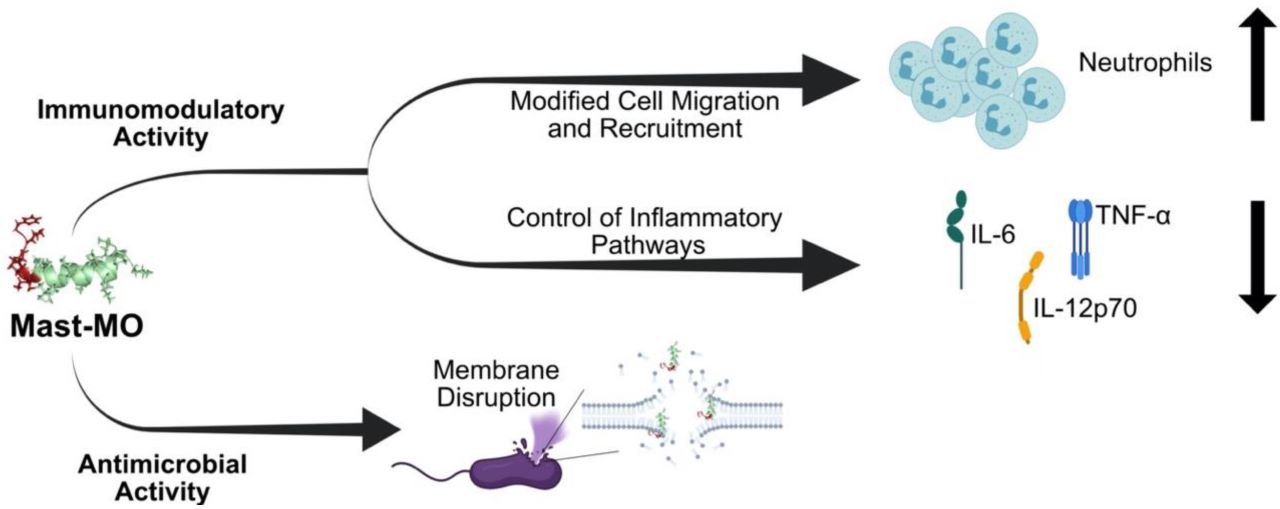A method for manipulating wasp venom peptide to maintain antimicrobial properties while reducing human toxicity.
Problem:
Almost 20% of global deaths (~11 million) are from sepsis, often caused by bacterial infections. 35,000 of these deaths are due to drug-resistant bacteria, which are becoming more prevalent. Drug-resistant bacteria are also dangerous in secondary infections. These drug-resistant infections pose a large threat during global pandemics such as the current COVID-19 pandemic. Therefore, there is a need for new and effective antibiotics. Toxins contained in venom have antibiotic potential, however these venoms are inherently toxic to humans.
Solution:
Modified wasp venom peptide has potent antibacterial activity while avoiding the toxicity of normal wasp venom. The modified peptide also reduces inflammation while activating an effective immune response to bacterial infection.
Technology:
The inventors searched a database of antimicrobial peptides to find common peptide sequences for activating the immune system. The peptide sequence attaches to wasp venom peptide. This peptide damages the outer membrane of bacteria, recruits immune cells that fight bacterial infections, and reduces inflammation. Since this peptide is still toxic to certain human cell types, the inventors further refined the added peptide sequence by swapping amino acids. The final modified peptide maintains the antibacterial properties of the initial peptide while eradicating its toxicity.
Advantages:
- Permeabilizes outer membrane of bacteria
- Increases leukocyte recruitment to bacterial infection
- Decreases inflammatory markers in response to bacterial infection
- Treatment of mouse bacterial infections comparable to current standard-of-care antibiotics
- 5-fold reduction in human cell toxicity with final refined peptide

The wasp venom protein, mast-L (green), modified with the addition of an engineered protein sequence (red), resulting in the mast-MO antibiotic protein. Mast-MO plays dual purposes in fighting bacterial infections. The protein modulates the immune system through neutrophil/leukocyte recruitment and inflammatory marker suppression. Mast-MO also functions as an antimicrobial agent by damaging the outer membrane of bacteria. Figure taken from Figure 5A of Silva ON et al.,
Proc Natl Acad Sci USA 2020 Oct 27; 117(43): 26936.
Case ID:
20-9434-tpNCS
Web Published:
5/12/2023
Patent Information:
| App Type |
Country |
Serial No. |
Patent No. |
File Date |
Issued Date |
Expire Date |